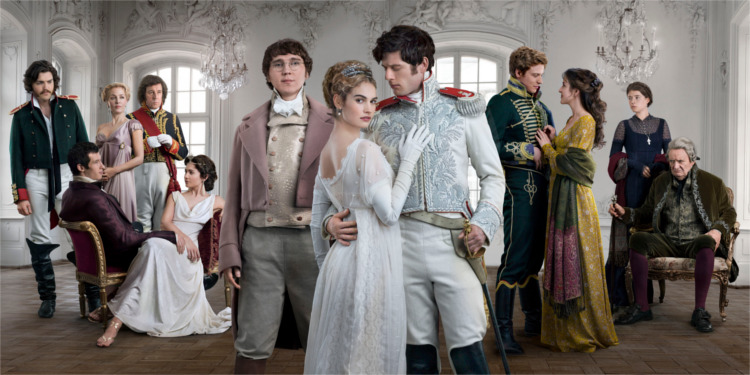Period Problems? The Need for Greater Inclusivity in Costume Dramas
With the Christmas season well and truly over, it’s fair to say more than one of us have indulged in a Terry’s Chocolate Orange while watching the latest “event” drama on BBC. This year it was The Miniaturist based on the novel by Jessie Burton. The drama was not only a sumptuous costume drama set in the Dutch golden age full of twists and turns, it also did something that costume dramas often have a problem with: a cast that features a person of colour.
Let me be the first to say that I am a massive fan of period and costume dramas. That joke Dylan Moran has about eating a box of milk tray while watching Jane Austen adaptations? The one where he says “oh look the lovely one is on a horse?” It’s fair to say that’s an accurate description of my Christmas television watching. However, even though this is a genre I love, I’m not above admitting it has got some problems, the most glaring one being with diversity and representation.
While in theory having an all-white cast set in regency England isn’t a problem per say, it’s the effect on BAME (Black, Asian, Minority ethnicity) actors, particularly within the UK, that causes concern.

In an interview about being based in Britain, actress Thandi Newton highlighted the problem of the dominance of costume dramas in the British entertainment industry. She has said “I can’t work, because I can’t do Downton Abbey, can’t be in Victoria, can’t be in Call The Midwife … there just seems to be a desire for stuff about the royal family, stuff from the past, which is understandable, but it just makes it slim pickings for people of colour.” What this also does is create a narrative that there were no people of colour in Britain’s (and by extension the UK’s) historical past, which given the fact that it colonised half the globe, is a complete lie. There is evidence of black people from Roman times as well the almost forgotten story about the failed alliance between Queen Elizabeth I and Sultan Murad the III (where’s the BBC drama about that?)
Many will point to “historical accuracy” in defence of the lack of non-white actors in period and costume dramas … isn’t the point of a costume drama, well, the drama?
So, how can we fix this? Part of the problem lies in costume and historical drama’s source material, not “history” as you may think, but books, often historical fiction. Look at most costume dramas and you’ll see that they’re based on a series of popular books, ‘Pillars of the Earth’, ‘Lark Rise to Candleford’, all of the Jane Austen adaptations. The practice is mostly born out of a guaranteed audience of people who have read the book, but it also means that if every costume drama is adapted from a book which only features upper-class white characters then that’s all there will be on TV. Which is why contemporary fiction like Burton’s is so important. The Miniaturist featured a black British actor in a main role, and what’s more, he’s a character with motivation, and not just there as a prop. There are other shows like Ripper Street and Outlander that feature story lines with characters of colour, such as Yi Tien Cho in Outlander. However, these characters aren’t often given much to do, and in the case of Ripper Street they don’t stick around for much longer than an episode.
Many will point to “historical accuracy” in defence of the lack of non-white actors in period and costume dramas. And while there is a lot of evidence to show that history was more diverse than TV and movies show us, I would argue, isn’t the point of a costume drama, well, the drama?

Most historical and costume drama will often use a time as a setting: the conflict and drama between the characters is why we watch. Not many people complain about how the universal accent for costume dramas is an English one, even when it’s set in 1800’s Russia, like in the BBC’s War and Peace.
And even when sticking to historical “accuracy”, people of colour would usually only feature in the roles of servants. Why not make these interesting roles? An excellent example of this was in the recent costume drama Lady Macbeth, which featured two actors of Colour that were integral to the plot and had agency. This problem can be solved by simply hiring a more diverse writing staff and encouraging writers to think about how their dramas reflect the diverse society we live in now.
People need to see themselves in the media they watch, if people of colour, LGBT, people from the travelling community and even working-class people just pushed to the side-lines or just not shown at all, then it’s like these people didn’t even exist and aren’t worth telling stories about. For many people costume dramas are a type of escapism, and it’s a universal modern and a contemporary thing everyone enjoys. All I’m saying is, let us extend that enjoyment with a more diverse cast and diverse stories and settings.

